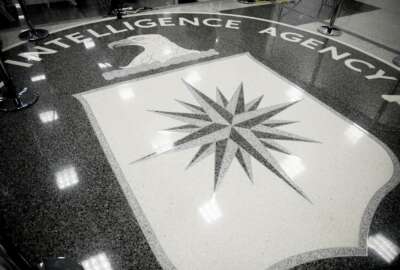The State Department’s intelligence branch is setting up a new open source office to improve how it shares analysis with diplomats worldwide under a new strategic plan that puts a major emphasis on upgrading the bureau’s IT operations.
Brett Holmgren, assistant secretary of state for intelligence and research, says the Strategic Open Source Coordination Office will serve as a “central point of contact” for policy, training and tradecraft around open source intelligence, or OSINT. The new unit will also test and procure open-source tools, help deliver them overseas, and manage contracts.
The Bureau of Intelligence and Research, or INR, provides intelligence to U.S. diplomats. But most diplomats, spread out at locations across the world, have sporadic access to classified U.S. intelligence assessments.
“Being able to leverage open source in a fundamentally different way than we’ve done so to date will allow us to share our best insights at the unclassified, FOUO, or the sensitive but unclassified level, on new platforms to our diplomats overseas,” Holmgren said on Inside the IC.
The intelligence community is increasingly looking to improve its use of OSINT, especially as Russia’s invasion of Ukraine plays out across social media feeds, commercial satellite images and other publicly available sources.
The open source office is part of the bureau’s new strategic plan, called “INR 2025.” It lays out five major pillars, starting with an imperative to “elevate strategic analysis and redefine intelligence support to diplomacy.”
Holmgren, who was sworn in last September, said that first pillar represents something of a return to INR’s roots of developing long-range, strategic intelligence products.
“We really want to kind of reinvest in that core capability,” he said. “Over the years, we’ve become a little bit overstretched in responding to a lot of the demand for current assessments, and we’ll continue to do that, obviously, to support our policymakers. But we really want to step back and make sure that in the intelligence community, we are one of those agencies that is thinking about where the world is headed, and trying to identify some opportunities and risks over the horizon to provide a warning, and also to help enable our policymakers to think through wise foreign policy strategies.”
INR’s digital vision
The strategy also prioritizes digital modernization. As Holmgren puts it, its about shifting away from an operations and maintenance mindset for IT toward “a more modern, agile, innovative technology team.”
In order to oversee that shift, INR created a chief information officer position. Raymond Romano is currently acting CIO for the bureau. He previously led the State Department’s cyber threat investigations division at the Bureau of Diplomatic Security.
INR is also creating a technology governance board to oversee the bureau’s IT modernization efforts and ensure technology is incorporated into its strategic planning process moving forward, according to Holmgren.
“It’s a cultural shift, but I think it’s vitally important, and it starts at the top in terms of how the leadership of our organization views technology and the role that it will play,” he said.
The bureau is already sketching out a new mobile strategy, according to the new strategy. Holmgren says mobile devices will be key to delivering more open-source and unclassified information to diplomats across the globe.
“Imagine a diplomat riding into work in the morning, or they’re getting ready at their home in the morning, and they’re somewhere in Asia, and they’re able to pull up the INR app on their mobile device,” Holmgren said. “We want to be able to provide real-time, relevant information to our diplomats in the most accessible manner possible, and we do view a mobile as a real opportunity for us to do so.”
Tech savvy, diverse workforce
Holmgren also thinks INR’s future workforce will continue to be more technologically savvy, even if they’re not all software engineers.
“They don’t need to be fluent in JavaScript and Python languages,” he said. “They don’t need to know how to code. But they do need to understand how technology operates. They need to understand and be comfortable with using modern technology, so that they can be successful in the future.”
Holmgren says it’s not just an imperative from an internal, business operations perspective.
“I think you’ll see more officers with some backgrounds in science and technology, just given where the threat landscape is evolving in the world, everything from global pandemics to emerging technologies and cyber, and how all of these technologies are applied in the military context as well,” he said. “I think it’ll be important to have experts on our team that not only understand the deep history of a particular region, or understand applied economics, but that actually understand and have a deep familiarity with some of the science and some of the education that underpins a lot of these disciplines.”
INR’s strategy also places a priority on recruiting individuals from more diverse backgrounds and perspectives. Diversity continues to be a challenge across the intelligence community.
“It’s making sure that we are being very deliberate about our recruiting strategy moving forward,” Holmgren said. “And we’re going to continue to invest in expertise, regardless of where it comes from. But we are going to make sure that we put a premium on forcing ourselves to think more critically about our recruitment strategies, and not just doing what’s easy, but doing what’s hard, because ultimately, that will make us better and more effective as a bureau in the future.”
Copyright
© 2024 Federal News Network. All rights reserved. This website is not intended for users located within the European Economic Area.
